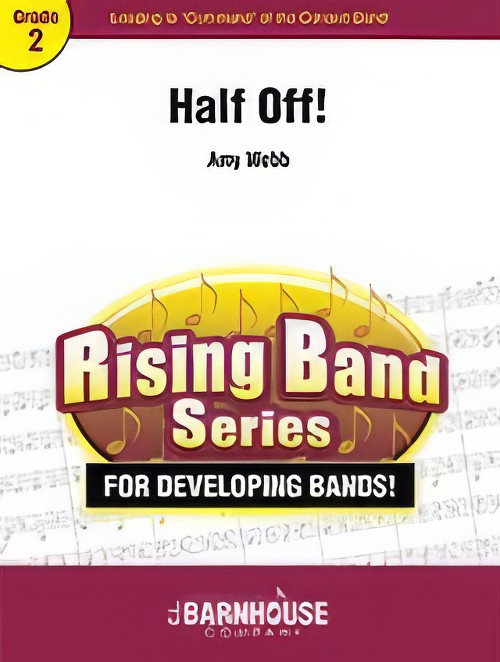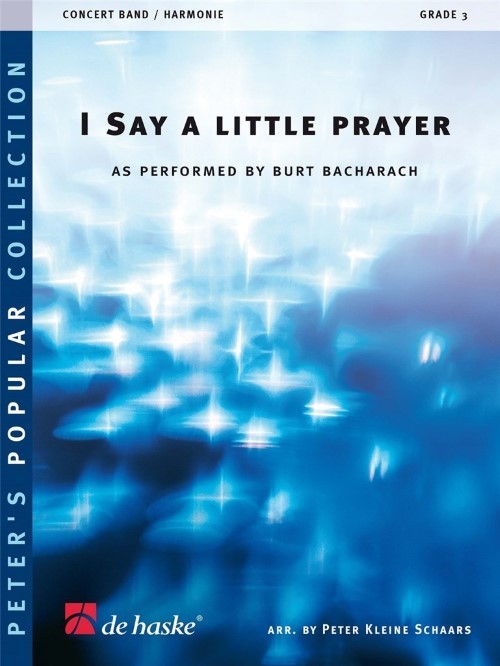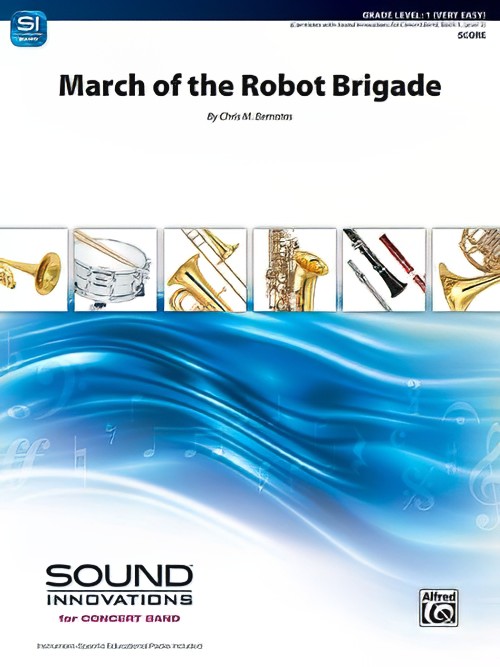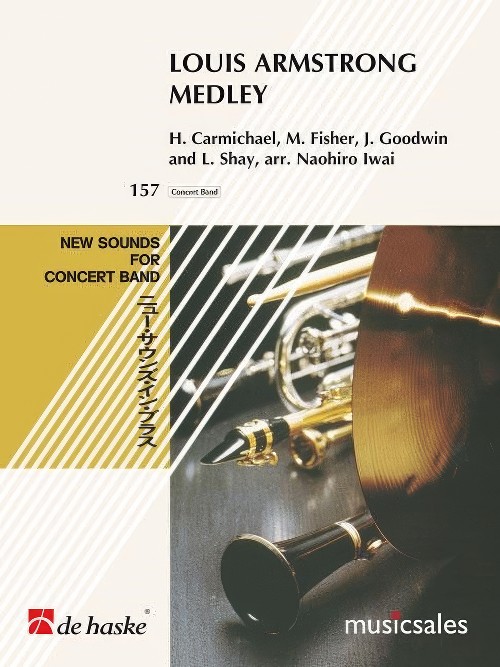Results
-
 £71.50
£71.50American Folk Tune Adventure - David Gorham
From the mountains of the Appalachians to the shores of the seas, Americas history is reflected in its folksongs. Two of these song, Sweet Betsy From Pike and Frog Went A-courtin are presented here and provide young bands an excellent opportunity to work on contrasting styles, with a slow, expressive section followed by a happy, rollicking ending.
Estimated dispatch 7-14 working days
-
 £71.50
£71.50Journey To Aeolia - Barry E. Kopetz
This work is written in the Aeolian mode, and is meant to spur the imagination of young musicians who perform the music. It is a musical representation of an adventure by two Lochrian boys who have witnessed a shooting purple star passing in front of the moon. This leads to mysterious happenings and adventures.
Estimated dispatch 7-14 working days
-
 £104.50
£104.50Three Stars Of Tennessee - Gary P. Gilroy
Inspired by the three distinct cultural regions of Tennessee, this three-movement work abounds with flair and creativity. The first movement, Smokey Mountain Jig, salutes the eastern "mountain folk" with an original Irish jig. Movement two, Plantation Sunrise,is a beautiful ballad for the central region. Movement three, Johnny on the River, reflects life in western Tennessee as it depicts the vivacious business and social life on the river. A wonderful work!
Estimated dispatch 7-14 working days
-
 £104.50
£104.50Two Preludes by Giuseppe Verdi - Giuseppe Verdi
In his compositional craft, Verdi was not reluctant to display some of his most powerful and dramatic music in his overtures, preludes and ballet scenes. His preludes before individual acts of the operas were shorter than his overtures, but they do foreshadow the mood and intense drama of the ensuing scenes. Paired together in this transcription are preludes from Ernani and Atilla, his fifth and ninth of 26 operatic works.
Estimated dispatch 7-14 working days
-
£84.50
The Legend of Taum Sauk - Larry Clark
A strong new concert/contest piece written to depict the legend of Taum Sauk mountain in central Missouri. It is a classic Romeo and Juliet saga that involves two different tribes of Native Americans. Larry Clark works to bring out the drama of this story through his music. It is at first fast-paced and pulsing, with a 6/8 groove followed by a love song built on the same musical material, then leading back to the uptempo music for a conclusion. A solid work for young band that can introduce 6/8 time and has cross-curricular possibilities.
Estimated dispatch 7-14 working days
-
 £118.99
£118.99Louis Armstrong Medley - Hoagy Carmichael
Even 40 years after his death, Louis Armstrong remains one of the most popular jazz trumpeters and singers of all time. In Louis Armstrong Medley, Naohiro Iwai has beautifully arranged Armstrong's unmistakable version of the Russian folk song, Dark Eyes (1954). This is then followed by two of his greatest hits: the jazz standard, Georgia on My Mind (1930), which features a tenor saxophone solo, and When You're Smiling (1929).
Estimated dispatch 7-14 working days
-
 £49.00
£49.00Half Off! (Concert Band - Score and Parts) - Webb, Amy
Teaching students the concept of cut time in music can be difficult and daunting, but not so with "Half Off!," an engaging, light-hearted learning tool. Using only notes and rests that are easily divisible by two, combined with a catchy tune, this song will quickly show kids that cut-time is nothing to be feared, and actually a lot of fun to play. Onward and upward with "Half Off!" Duration: 1.30
Estimated dispatch 7-14 working days
-
 £84.99
£84.99I Say a Little Prayer (Concert Band - Score and Parts) - Schaars, Peter Kleine
This bittersweet song from 1967 is a real classic, partly due to the rendition by two queens of soul, Dionne Warwick and later also Aretha Franklin. The theme was very topical at the time: A woman is concerned about her husband fighting in the Vietnam War, and thinks about him during her day-to-day worries. Top arranger Peter Kleine Schaars created a tasteful and carefully orchestrated version. His arrangement stays true to the original colour and feel of the song, and, as a grade 3 piece, is still perfectly playable for most bands. Duration: 2.30
Estimated dispatch 7-14 working days
-
 £49.95
£49.95March of the Robot Brigade (Concert Band - Score and Parts) - Bernotas, Chris M.
Here they come marching two by two-it's a robot brigade! This dramatic piece for beginning band uses only the first six notes students learn. It is full of meaningful teachable moments that include call-and-response, minor mode, dynamics, and much more. The low brass and low winds play a prominent role throughout and everyone in the band will stay engaged. Students will surely practice this one!Duration: 2:30
Estimated dispatch 7-14 working days
-
 £118.99
£118.99Louis Armstrong Medley (Concert Band - Score and Parts) - Iwai, Naohiro
Even 40 years after his death, Louis Armstrong remains one of the most popular jazz trumpeters and singers of all time. In Louis Armstrong Medley, Naohiro Iwai has beautifully arranged Armstrong's unmistakable version of the Russian folk song, Dark Eyes (1954). This is then followed by two of his greatest hits: the jazz standard, Georgia on My Mind (1930), which features a tenor saxophone solo, and When You're Smiling (1929).Duration: 6.00
Estimated dispatch 7-14 working days
